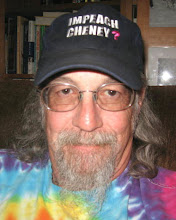The New York Times
Thursday 13 March 2008
Washington - The Environmental Protection Agency announced a modest tightening of the smog standard on Wednesday evening, overruling the unanimous advice of its scientific advisory council for a more protective standard.
The administrator, Stephen L. Johnson, said that by law he was forbidden to consider costs in setting the standard, but urged Congress to change the law so future administrators could do just that.
The standard, stated in terms of average concentrations of ozone at ground level over an eight-hour period, is now 84 parts per billion. Mr. Johnson's decision, if it survives court review, would lower that to 75, although implementation could be decades away. Late last year a scientific advisory panel recommended 60 to 70 parts per billion.
"I've made the most health-protective eight-hour ozone decision in the nation's history," said Mr. Johnson. The Clean Air Act requires periodic review, and the announcement Wednesday updates a standard from 1997.
But John M. Balbus, a physician and the chief health scientist at the Environmental Defense Fund, said, "Clearly at some point you get to a level where additional benefits just aren't worth it, but I don't think we're there at 75."
"The E.P.A.'s own risk estimates show that between 75 and 70, there will be hundreds more deaths and thousands more visits to emergency rooms, and hundreds of thousands of more lost school days," he said.
Regardless of which figure was chosen Wednesday, tens of millions of people live in counties that do not meet the current standard of 84. And the timetable for meeting the new one could be decades, depending on the severity of the problem, city by city.
Places that violate the current standards include Southern and Central California, the Houston, Dallas and Atlanta areas, and a swath of counties from the Washington, D.C., area through central Massachusetts.
E.P.A. figures for 2004 to 2006 show there were 166 counties around the country that could have met a standard of 75 parts per billion but not 70. They include populous ones, like Miami-Dade in Florida, King County in Washington, and the Bronx in New York.
In all, 345 counties now violate the standard of 75 parts per billion. Bringing them into compliance would prevent 900 to 1,100 premature deaths a year, according to the agency, and result in 5,600 fewer hospital or emergency room visits. Reaching the standard will cost $8.8 billion a year, according to the agency, but the figure does not take account of health benefits.
Counties that cannot meet the standard face the threat of limits on new highways and industries. Technically the administrator set a standard on ground-level ozone, which is the main ingredient of smog. Ozone is formed by the action of sunlight on two kinds of pollutants, volatile organic compounds, which come from gasoline and various industrial processes, and nitrogen oxides, which are produced in cars and power plants. Ground-level ozone is also a greenhouse gas.
While many groups and elected officials complained, not all the complaints were in the same direction. The Edison Electric Institute, the trade association of the investor-owned utilities, said in a statement that the precise relationship between ozone and human health was still the subject of scientific dispute.
"E.P.A. is promising health benefits that people may never receive, even though they'll end up paying for them at the pump and through higher energy bills," said a statement from John Kinsman, the utility group's senior director for the environment. "Hundreds of counties haven't been able to meet the current standard set a decade ago, and moving the goal posts again will inflict economic hardship on these areas without speeding air quality improvement."
But others said the Bush administration was setting its sights too low.
"It will be close to a decade from now before the first ounce of pollution is reduced by any industry," said S. William Becker, executive director of the National Association of Clean Air Agencies, whose members are state and local officials.
"That decade is an eternity in terms of technological advancement," Mr. Becker said.
The debate in coming days is likely to center on why Mr. Johnson chose a number outside the range recommended by his 23-member scientific advisory board.
Representative Henry A. Waxman, Democrat of California and head of the House Committee on Oversight and Government Reform, told Mr. Johnson in a letter that the decision was similar to one in 2006 to overrule a recommended standard on fine particles. The decisions "suggest that science is not the primary basis for your decisions," he wrote, asking for an explanation.
Rush Is On to Cement Regulations
By Elizabeth Williamson
The Wall Street Journal
Tuesday 11 March 2008
Industries bet they'll fare better with this White House than the next one.
Industries from agriculture to power are pressing for the Bush administration to act on a slew of pending regulations, betting they will do worse no matter who wins the White House in the fall.
Last month, power companies and manufacturers took their complaints about an expected Environmental Protection Agency proposal to tighten federal smog rules to the White House budget office, where they urged officials to reject the agency's proposal to tighten standards, due out tomorrow.
|
In response, public health groups met with budget-office officials to argue for the tighter standards.
This week, the Interior Department is expected to publish its decision to remove the gray wolf from its endangered species list in three Northern Rockies states. Ranchers sought such a decision, which angers environmental groups like the Natural Resources Defense Council, which is fighting the de-listing.
The Small Business Administration recently released its Top Ten list of rules businesses want changed before President Bush leaves office in January. Business owners and their representatives nominated more than 80 rules for the list, including workplace safety, tax, and contracting regulations.
The U.S. Chamber of Commerce is challenging several pending employment and labor rules, including one that would tighten the requirements for employees seeking family medical leave. If the lobbying group can't influence the wording of regulations, it will try to influence the instructions on interpreting them issued by the agency, said Randel Johnson, vice president of the group, which lists battles against regulation as a key challenge for the next five years.
These so-called midnight regulations often characterize an administration's final year. Industry lobbyists feel greater urgency this time because they are worried about what Democrats would do in power and because they also are uncertain about the presumptive Republican nominee, Arizona Sen. John McCain.
Last Dash
- The Trend: Industries are pushing for friendly regulations and rollbacks in the Bush administration's final year.
- Why: Deregulatory types believe President Bush favors them more than any of the presidential candidates.
- What's Next: The tussle over new rules could intensify, involving industries, watchdog groups, government agencies and congressional Democrats.
Pushed Cable Industry
As chairman and ranking member of the Senate Commerce Committee, Sen. McCain pushed the cable industry to allow consumers to pay for single channels rather than a package of services, and he fought with broadcasters to return valuable transmission spectrum so it could be used for police and fire departments.
Sen. McCain has worked with prominent Democrats to allow importation of drugs from Canada, which is fiercely opposed by the pharmaceutical industry, and with independent Sen. Joseph Lieberman of Connecticut (then a Democrat) to regulate carbon-dioxide emissions, which would boost costs for many industries.
"The midnight regulatory phenomenon is real and tends to take place after the election results are known, but McCain is certainly not a traditional deregulatory conservative," said Peter Van Doren, senior fellow at the conservative-leaning Cato Institute.
Many current industry challenges target EPA regulations. House Oversight and Government Reform Committee Chairman Henry Waxman (D., Calif.) is leading congressional opposition to a proposed rule that would weaken air-pollution controls on industries located near national parks. According to documents obtained by Mr. Waxman's staff, EPA experts said the rule would "allow for significant degradation" of air quality in the parks.
Democrats on the House Energy and Commerce Committee are challenging an EPA proposal to release farms from reporting potentially hazardous emissions of ammonia and hydrogen sulfide. The poultry industry has lobbied for years for an exemption from ammonia-emissions reporting. EPA chief Stephen Johnson has acknowledged that the agency's scientists say the gases pose a human health risk above reportable levels.
"This action favors special interests at the expense of the public health and the communities living near these facilities," said House Energy and Commerce Committee Chairman Rep. John D. Dingell (D., Mich.).
An EPA proposal published Friday applies to 19,000 feedlots regulated under the Clean Water Act. It allows operators to certify that they won't release waste into waterways, which exempts them from the need to obtain a discharge permit. In the case of an accidental discharge, the feedlots' self-certification shields them from lawsuits over their permit-free status.
The rule would take effect this summer. It addresses a lawsuit filed by environmental and industry groups challenging different facets of Clean Water Act provisions governing feedlots.
Legal Responsibility
Livestock operators and the EPA say the proposal applies only to farms that don't plan to discharge wastewater, and it doesn't release them from legal responsibility for discharges.
Scott Edwards, legal director for the Waterkeeper Alliance, a party to the lawsuit that led to the proposed rule, calls it a "free ride" for politically connected operators who have been chafing under pollution controls in place for three decades.
"There will be no monitoring, there will be no oversight," Mr. Edwards said. Operators, he said, "are basically holding up their hands and promising they won't discharge."
Under the proposal, about 10,000 swine-feeding operations represented by the National Pork Producers' Council, for example, wouldn't need discharge permits.
But the lobbying group isn't satisfied. "It's clear the EPA is trying to do something for us," said Michael Formica, the council's environmental policy counsel. "But ... they still want to preserve this right to come after somebody for failing to apply for a permit."
Over the course of this year, industries, through the Bush administration, will be "trying to change the framework to make regulation voluntary," said Rick Melbert, director of regulatory policy at OMB Watch, a nonpartisan group that tracks government rulemaking.
"Whatever your political agenda, you're going to try to accomplish it through these regulations.... There's so much less public scrutiny, and so much less transparency."
-------





























No comments:
Post a Comment